Are Plants Growing in Antarctica the icy continent at the southernmost point of the world, is known for its extreme cold and harsh conditions. But despite the challenging environment, plant life does indeed exist in this remote region. In this section, we will explore the fascinating world of Antarctic flora and delve into the question of whether plants are able to grow in such extreme conditions.
Although Antarctica may seem like a barren wasteland, the continent is home to a surprising variety of plant life. From mosses and lichens to flowering plants and grasses, Antarctic vegetation has adapted to survive in an environment with limited sunlight, scarce water resources, and freezing temperatures.
- Despite its harsh conditions, plant life does exist in Antarctica.
- Antarctic vegetation has adapted to survive in an environment with limited sunlight, scarce water resources, and freezing temperatures.
- The continent is home to a surprising variety of plant life, from mosses and lichens to flowering plants and grasses.
Antarctic Vegetation: A Closer Look
When we think of Antarctica, we often picture a barren, icy wasteland devoid of life. However, this couldn’t be further from the truth. Antarctica is actually home to a surprising variety of plant life, known collectively as Antarctic vegetation.
While the majority of the continent is covered in ice, there are several ice-free areas where vegetation can grow. These areas are found primarily along the coast and on the Antarctic Peninsula, where the climate is milder and the terrain is more hospitable to plant life.
The plant species found in Antarctica are diverse, ranging from lichens and mosses to flowering plants and shrubs. Mosses are particularly abundant, with over 200 species identified in the region. Many of these plants have adapted to the extreme environment of Antarctica in unique and fascinating ways.
One example of Antarctic vegetation is the Antarctic hair grass (Deschampsia antarctica), a flowering plant that is able to survive in temperatures as low as -20°C. Another is the Antarctic pearlwort (Colobanthus quitensis), a herbaceous plant that can tolerate temperatures as low as -30°C and can photosynthesize even under low-light conditions.
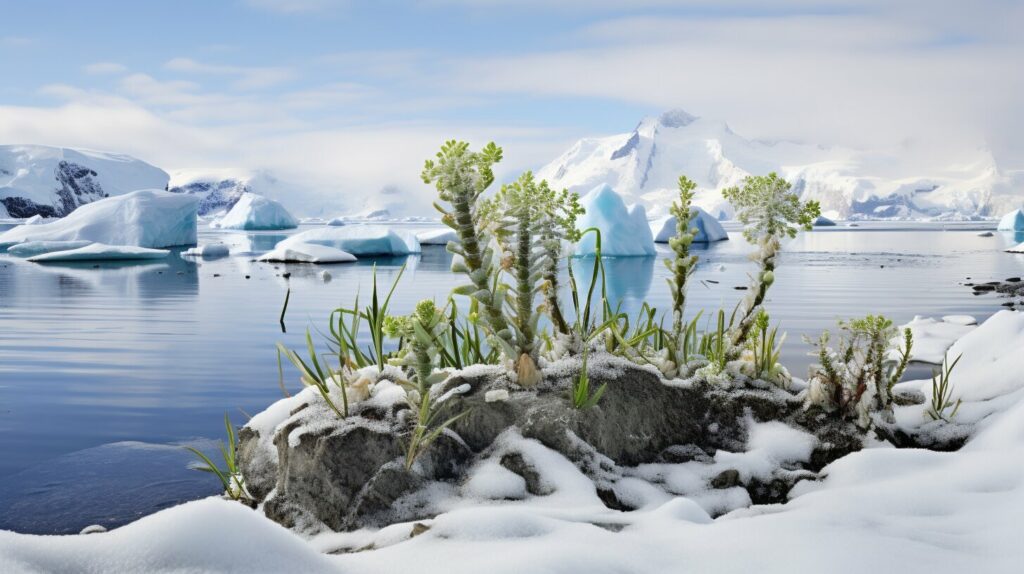
The unique adaptations that Antarctic plants have developed to survive in extreme conditions will be discussed in greater detail in the following sections.
The Resilience of Antarctic Plant Species
Plant life in Antarctica is sparse, with only around 100 species of moss, lichen, and algae able to survive in this extreme environment. Yet, these plants are able to withstand some of the harshest conditions on earth, displaying remarkable resilience and adaptability.
One of the key characteristics of Antarctic plant species is their ability to survive in extreme cold. These plants have developed a range of adaptations to help them withstand the freezing temperatures, including the production of anti-freeze proteins that prevent ice crystals from forming within their cells.
Another adaptation of Antarctic plants is their ability to grow slowly, conserving energy and resources in a climate where sunlight and nutrients are scarce. Some species, such as mosses, are able to go dormant for extended periods, waiting for more favorable conditions before resuming their growth.
Despite these challenges, Antarctic plant species exhibit an impressive range of diversity and complexity. Recent research has identified unique genetic and biochemical adaptations that enable these plants to survive and thrive in this extreme environment.
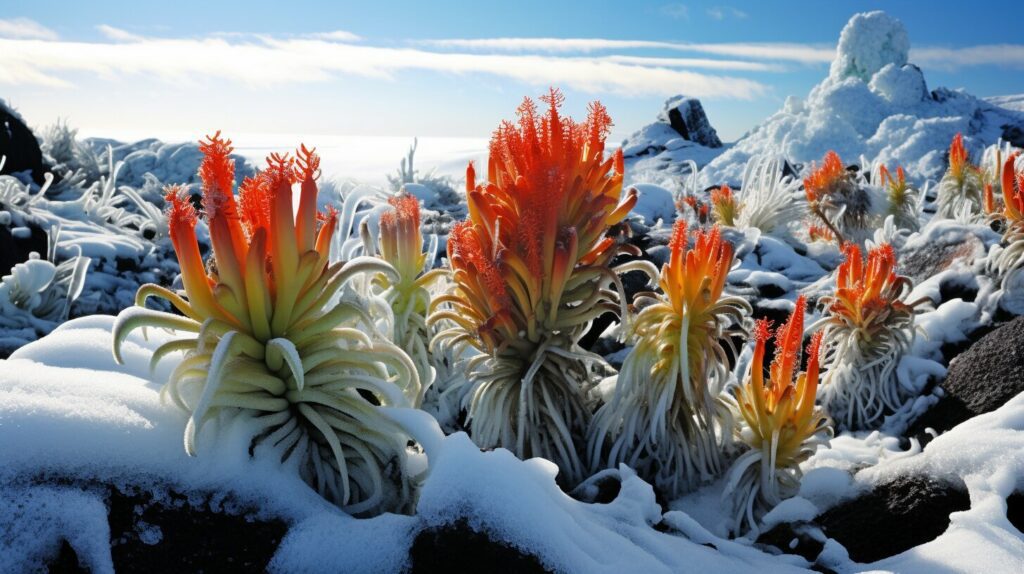
The study of Antarctic plant life is crucial for understanding how life can adapt and evolve in extreme environments. By uncovering the secrets of Antarctic plant adaptations, researchers can gain insights into possible solutions for some of the challenges facing our planet today.
Plant Adaptations in Antarctica: Surviving the Cold
Antarctica is known for its cold and harsh climate, but some plant species have adapted to survive in these extreme conditions. One of the most important adaptations for these plants is their ability to withstand freezing temperatures.
Antarctic plants have developed unique strategies to prevent freezing, such as producing anti-freeze proteins. These proteins bind to ice crystals and prevent them from growing, effectively stopping the plants from freezing solid. Additionally, some Antarctic plants have specialized cell structures that protect them from extreme cold, such as thick cell walls and small cell sizes that limit the amount of water that can freeze.
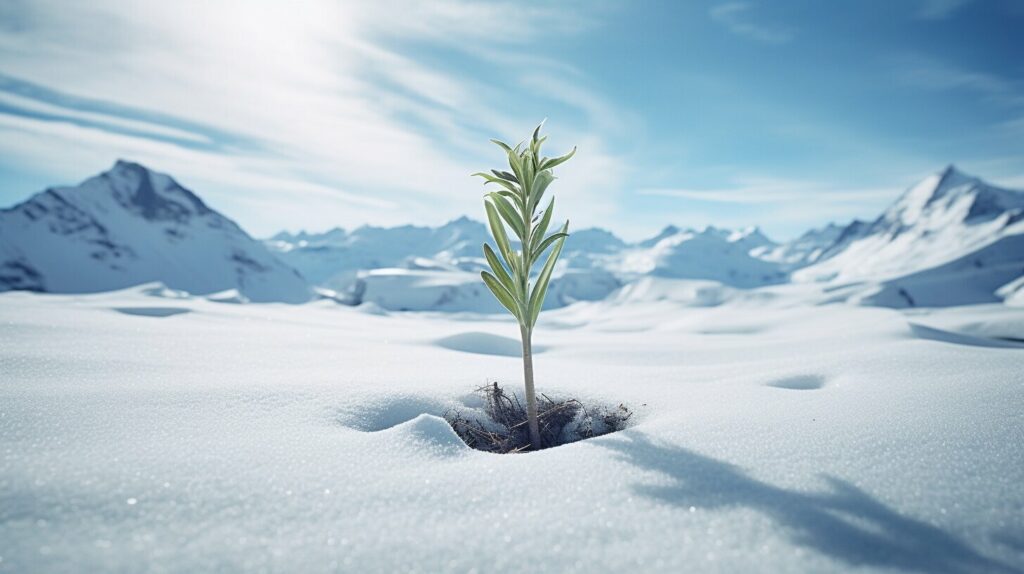
Another important adaptation for Antarctic plants is their ability to thrive in low light conditions. Due to its location at the South Pole, Antarctica experiences months of continuous darkness during the winter. To survive in these conditions, plants have developed the ability to photosynthesize at lower light levels than plants in other regions. Some Antarctic plants have also evolved to shade their own leaves, reducing the amount of light that reaches them and minimizing damage from high levels of ultraviolet radiation.
Overall, the adaptations of Antarctic plants provide valuable insights into how organisms can survive in extreme environments. By studying these adaptations, scientists can gain a better understanding of how life can persist in even the harshest conditions.
Research and Discoveries in Antarctic Plant Life
As a copywriting journalist, my fascination with plants in Antarctica has led me to discover some incredible ongoing research and discoveries in this field. Scientists and researchers from all over the world are studying the unique ecosystems of the continent and uncovering new insights into the biodiversity of Antarctic plants.
One recent study, published in the journal Global Change Biology, found that a species of moss in Antarctica called Bryum argenteum is able to rapidly respond to changes in its environment. It was discovered that these mosses can increase their photosynthetic efficiency by up to 40% in response to mild increases in temperature, highlighting their ability to adapt and thrive.
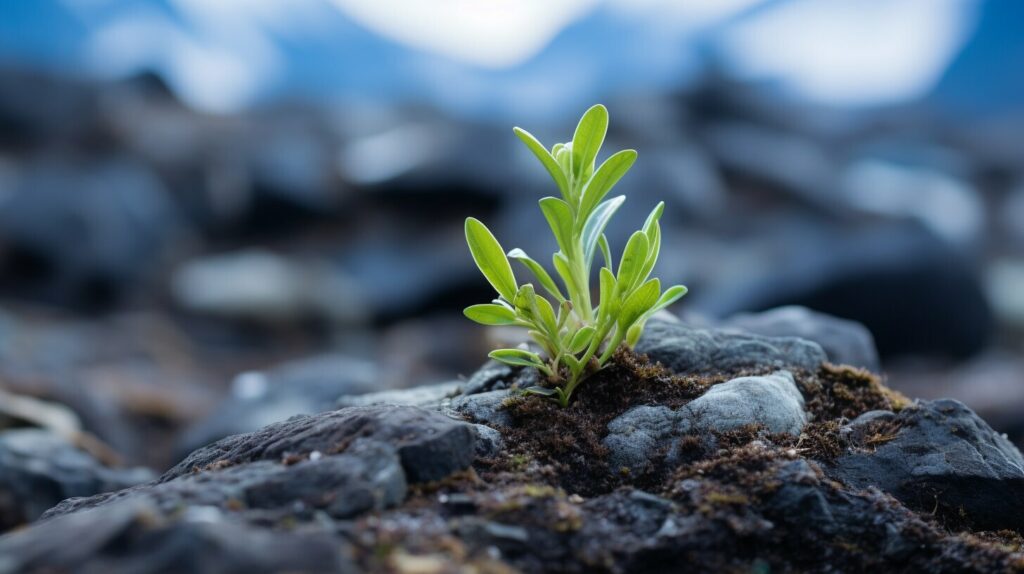
Another fascinating area of research is the study of the genetics of Antarctic plant life. Researchers are using DNA sequencing to identify the different species of mosses, lichens, and algae that exist on the continent, leading to the discovery of new species that were previously unknown.
These discoveries are crucial for understanding the biodiversity of Antarctica and the impacts of climate change on these unique ecosystems. It is only through ongoing research that we can fully appreciate the resilience and adaptability of Antarctic plant life.
The Biodiversity of Antarctic Plants
Antarctica is often associated with a barren, lifeless landscape, but in reality, this icy continent is home to a surprising diversity of plant life. From mosses and lichens to colorful algae and flowering plants, the vegetation of Antarctica is as unique as it is resilient.
Despite the harsh conditions, over 350 species of plants have been identified in Antarctica, with many more yet to be discovered. The lack of competition from other plants and predators has allowed Antarctic plants to evolve and adapt in fascinating ways, resulting in a wide range of shapes, sizes, and colors.
One of the most striking examples of biodiversity in Antarctic plants is the range of colors that can be found in algae and mosses. From vibrant greens and reds to deep purples and blues, these tiny organisms add a splash of color to the otherwise monochromatic landscape.
However, the biodiversity of Antarctic plants is more than just skin deep. These plants have also evolved unique strategies to survive the extreme cold, limited sunlight, and scarce water resources of their environment. For example, some mosses can enter a state of suspended animation during the winter months, allowing them to conserve energy and survive the long periods of darkness.
Preserving the biodiversity of Antarctic plants is crucial not only for scientific research but also for the health of the entire ecosystem. As the effects of climate change become increasingly apparent, it is more important than ever to protect these fragile ecosystems and the species that call them home. By studying the biodiversity of Antarctic plants, we can gain a deeper understanding of the natural world and develop effective strategies for conservation.
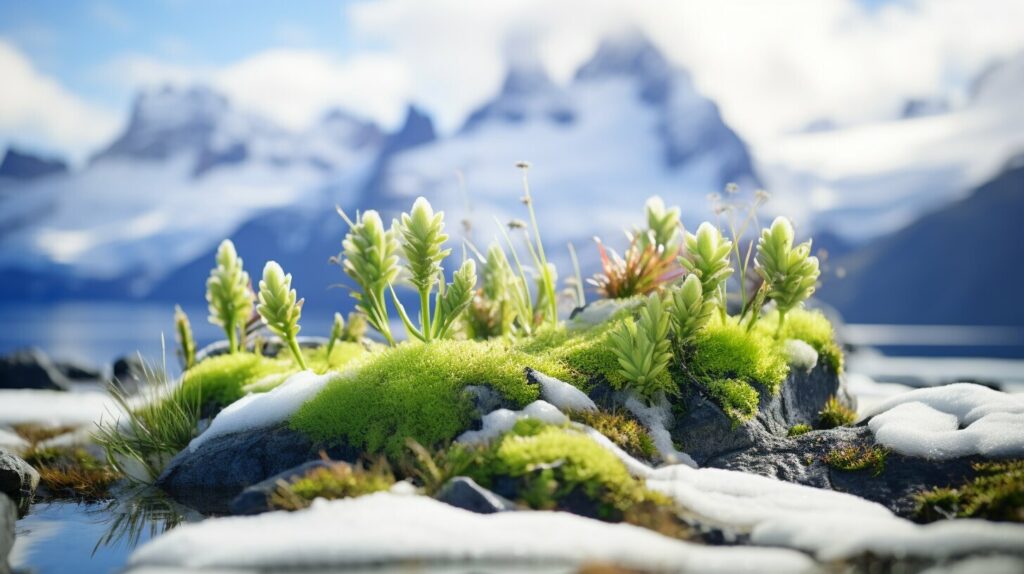
As we have seen, plant life in Antarctica is incredibly resilient, with unique adaptations that have allowed species to flourish in an environment that is hostile to most forms of life. However, the future of Antarctic plant life is uncertain.
Climate change is having a significant impact on the polar regions, and Antarctica is no exception. As temperatures continue to rise, the delicate balance of plant life in this region is being threatened. Warmer temperatures, changes in precipitation, and alterations to the nutrient balance of soils could all have a negative impact on Antarctic plant life, leading to declines in biodiversity and potential extinctions.
It is crucial that we take action to protect and conserve Antarctica’s plant life for future generations. Efforts are currently underway to establish protected areas and limit human impact on the continent, but more needs to be done.
Research into the biology and ecology of Antarctic plants is ongoing, and continued exploration and scientific study will be essential for understanding the impacts of climate change on these unique ecosystems.
By working to protect and conserve plant life in Antarctica, we can ensure that these valuable ecosystems continue to thrive and offer insights into the remarkable adaptability of life in extreme environments.
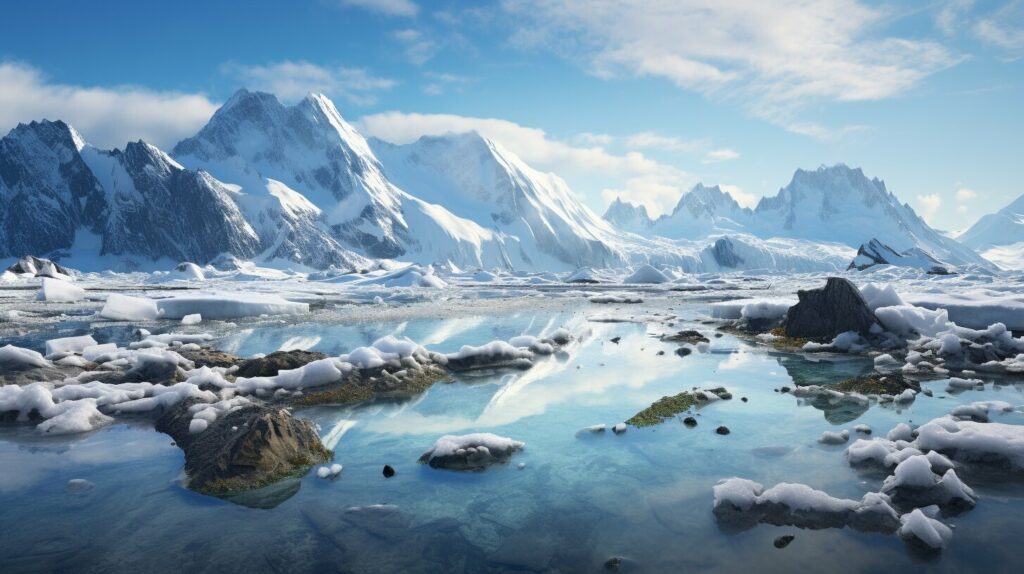
As we have explored in this article, the plant life in Antarctica is a fascinating and unique ecosystem. However, there are concerns about the future of these fragile environments, given the impacts of climate change.
Warming temperatures, shifting precipitation patterns, and other changes could have significant impacts on the survival of Antarctic flora. In recent years, scientists have already observed changes in plant growth patterns and alterations in the composition of plant communities in some areas of the continent.
To address these challenges, it is crucial that we continue to conduct research and monitor the health of Antarctic plant life. We must also take steps to protect and conserve these ecosystems, both through policy measures and individual actions.
Efforts are underway to establish protected areas in Antarctica and to limit human activities that could harm plant life in the region. By supporting these efforts and promoting sustainable practices, we can help ensure that future generations are able to experience the wonder and diversity of Antarctic vegetation.
In conclusion, it is clear that Antarctic plant life is a unique and valuable component of our planet’s biodiversity. By working together to understand, protect, and conserve these ecosystems, we can help ensure that they continue to thrive and contribute to the rich tapestry of life on Earth.
FAQ
Q: Are there any plants growing in Antarctica?
A: Yes, there are plants that are able to grow in the extreme conditions of Antarctica. Despite the harsh environment, Antarctic flora has adapted to survive in this icy continent.
Q: What types of vegetation exist in Antarctica?
A: Antarctica is home to various types of vegetation, including mosses, lichens, algae, and some flowering plants. These plants have unique characteristics that allow them to thrive in the extreme cold and limited sunlight of the region.
Q: How do plants in Antarctica survive in such harsh conditions?
A: Antarctic plant species have evolved remarkable resilience to survive in extreme cold, limited sunlight, and scarce water resources. They have developed adaptations such as anti-freeze proteins and specialized cell structures to withstand freezing temperatures.
Q: What ongoing research is being conducted on Antarctic plant life?
A: Scientists and researchers are actively studying Antarctic plant life to uncover new insights into the biodiversity and adaptations of these unique ecosystems. Ongoing research contributes to a better understanding of these plants and their role in the Antarctic ecosystem.
Q: How important is preserving the biodiversity of Antarctic plants?
A: Preserving the biodiversity of Antarctic plants is crucial for maintaining the delicate balance of the ecosystem. Climate change poses a potential threat to these plants, making conservation efforts essential for their survival and the preservation of this unique vegetation.
Q: What are the potential impacts of climate change on Antarctic plant life?
A: Climate change could significantly impact plant life in Antarctica, leading to changes in distribution patterns and potentially even extinction of some species. Rising temperatures and alterations in precipitation patterns may disrupt the delicate balance of these ecosystems.
Q: What efforts are being made to protect and conserve Antarctic vegetation?
A: Various organizations and researchers are working towards protecting and conserving Antarctic vegetation. Efforts include establishing protected areas, conducting research to understand the impacts of climate change, and raising awareness about the importance of preserving this unique plant life.

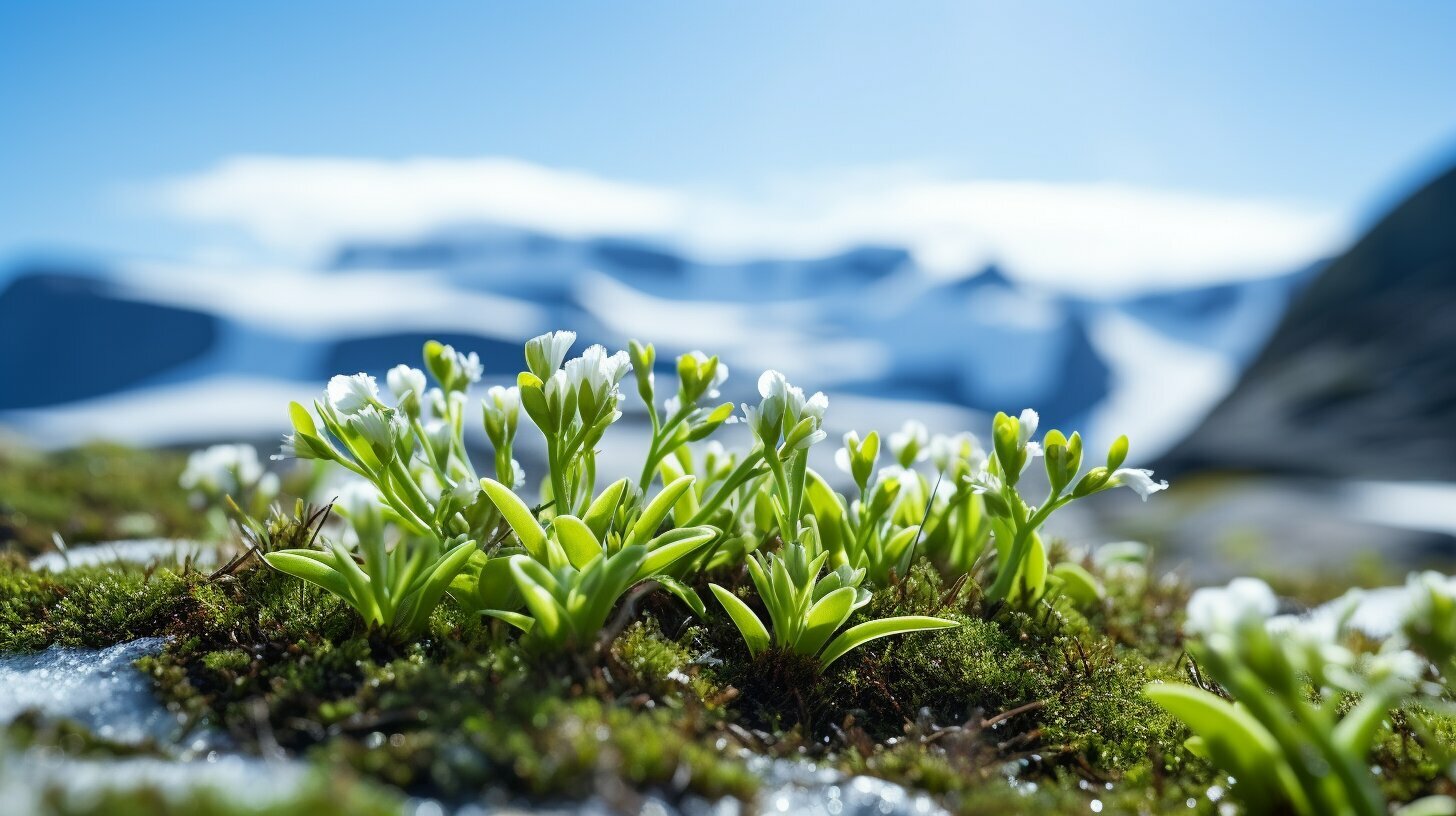

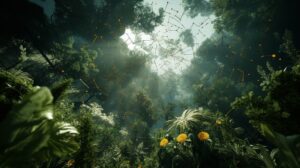

Pingback: Exploring the Intriguing Question: Can Plants Scream?